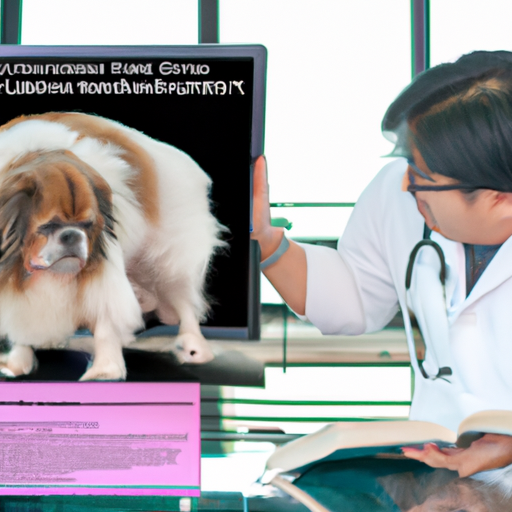As a caregiver, you shoulder the responsibility of looking after your furry friend’s health. One condition that dogs may potentially suffer from is Cushing’s disease. This article is your guide on how to diagnose Cushing’s disease in dogs.
Understanding Cushing’s Disease
Cushing’s disease, also known as hyperadrenocorticism, results from the overproduction of the hormone cortisol. Cortisol is crucial for stress response, weight maintenance, and immune system function. However, when it’s present in excess, it can cause a myriad of health problems.
Recognizing the Symptoms
The initial step in any diagnosis is recognizing the signs. Below are the common symptoms of Cushing’s disease in dogs:
- Increased thirst and urination
- Increased appetite
- Skin issues (thin skin, bruising, infections)
- A pot-bellied appearance
- Loss of hair
- Lethargy and decreased activity
If your dog exhibits these symptoms, it may be time to schedule a visit to the vet.
Diagnostic Tests
Diagnosing Cushing’s disease involves a series of tests. Here are the most common procedures:
- Urine Cortisol:Creatinine Ratio Test
- Low-Dose Dexamethasone Suppression Test (LDDS)
- High-Dose Dexamethasone Suppression Test (HDDS)
- Adrenocorticotropic Hormone (ACTH) Stimulation Test
| Test | What it Measures | Normal Results |
|---|---|---|
| Urine Cortisol:Creatinine Ratio | The amount of cortisol in the dog’s urine | Low |
| LDDS | How the dog’s body responds to a dose of dexamethasone | Low cortisol levels |
| HDDS | Differentiates between pituitary-dependent and adrenal-dependent Cushing’s | Low cortisol levels |
| ACTH | Measures how the adrenal gland responds to ACTH | Normal cortisol levels |
Treatment Options
The treatment for Cushing’s disease depends on its cause. Medication is the most common treatment, but surgery may be necessary for adrenal tumors. Here are the common medications used:
- Trilostane (Vetoryl)
- Mitotane (Lysodren)
Regular check-ups are crucial to monitor your dog’s response to treatment and adjust dosages as needed.
Prognosis
With proper treatment, dogs with Cushing’s disease can lead a normal, happy life. Regular vet visits are crucial in managing the disease. Keep in mind that the earlier the diagnosis, the better the prognosis.
FAQ
What causes Cushing’s disease in dogs?
Most cases are caused by a benign tumor in the pituitary gland. Less frequently, a tumor in the adrenal gland may cause the disease.
Can Cushing’s disease be cured?
While Cushing’s disease can’t be cured, it can be managed effectively with medication and regular vet check-ups.
Is Cushing’s disease painful for my dog?
Cushing’s disease itself is not painful, but its symptoms, like urinary tract infections or skin infections, can cause discomfort.
Are certain breeds more likely to develop Cushing’s disease?
Cushing’s disease can affect any breed, but it’s more common in Poodles, Dachshunds, Boxers, and Boston Terriers.
At what age is a dog most likely to get Cushing’s disease?
Cushing’s disease typically affects middle-aged to older dogs, usually those aged six or older.



